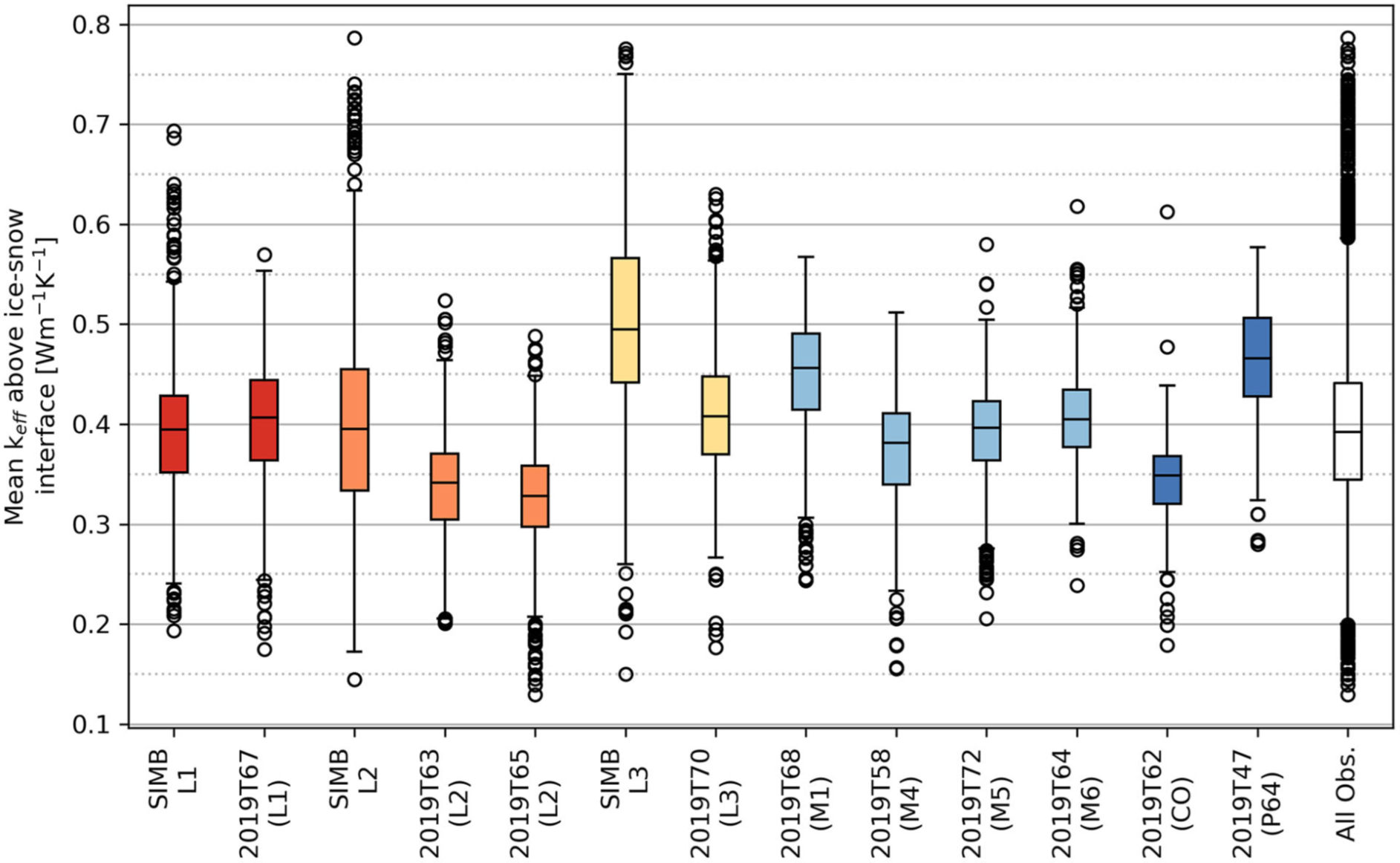Arctic sea ice energy balance sensitive to snow thermal conductivity
Submitter
Shupe, Matthew — University of Colorado
Area of Research
Surface Properties
Journal Reference
Sledd A, M Shupe, A Solomon, C Cox, D Perovich, and R Lei. 2024. "Snow thermal conductivity and conductive flux in the Central Arctic: Estimates from observations and implications for models." Elem Sci Anth, 12(1), 10.1525/elementa.2023.00086.
Science

Figure 1. Statistics of the derived thermal conductivity of snow at multiple observation sites across the MOSAiC observation domain. The boxes delineate the interquartile range around the median. The whiskers delineate their respective quartiles +/- 1.5 times the interquartile range. Outlying points are given as circles. Image from journal.
Variability in snow thermal conductivity can modulate the balance of energy exchange at the surface of arctic sea ice. Direct measurements have been used to derive spatiotemporally varying snow thermal conductivity that is consistent with measurements of surface radiative and turbulent heat fluxes at the Multidisciplinary drifting Observatory for the Study of Arctic Climate (MOSAiC).
Impact
Models often include a simplified representation of snow on arctic sea ice, typically with an assumed fixed thermal conductivity. This study reveals significant spatiotemporal variability in snow thermal conductivity observed at MOSAiC, with a median value that is 30% larger than what is typically assumed in models and variability on the order of 40% of the median value.
Summary
The surface energy budget over sea ice is comprised of radiative, turbulent, and conductive heat fluxes, all of which modulate energy flow, ice temperature, and ultimately the freezing or melting of the ice. Models typically only crudely represent snow on sea ice, if at all, and usually assume a fixed thermal conductivity. Observations from a spatial array of thermistor strings deployed as part of the yearlong MOSAiC expedition in the central Arctic (2019-2020) have been used to derive snow thermal conductivity, revealing significant variability in both space and time. Model simulations demonstrate how this variability in thermal conductivity can change the sea-ice conductive heat flux, and thereby modulate the relationship between surface radiative and turbulent heat fluxes. This variability also has implications for how rapidly heat is lost from the bottom of sea ice, which controls winter sea ice growth rates. Compared to these MOSAiC findings, most models that do represent snow on sea ice underestimate snow thermal conductivity by about 30%, meaning that the efficiency with which the snow insulates the sea ice is overestimated and the sensitivity of ice growth rate to atmospheric forcing is too low. Improved model parameterizations of snow structure and thermal properties can support improved representation of atmosphere-surface energy exchange and the resulting evolution of sea ice thickness.
Keep up with the Atmospheric Observer
Updates on ARM news, events, and opportunities delivered to your inbox
ARM User Profile
ARM welcomes users from all institutions and nations. A free ARM user account is needed to access ARM data.


















